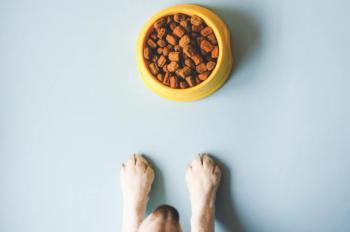
USDA backs emergency response model for states
Raleigh, N.C.-The U.S. Department of Agriculture (USDA) has awarded the State Animal Response Team (SART) a $250,000 grant to reproduce its model of animal emergency response in other states.
Raleigh, N.C.-The U.S. Department of Agriculture (USDA) has awarded the State Animal Response Team (SART) a $250,000 grant to reproduce its model of animal emergency response in other states.
SART, the public-private entity founded in North Carolina, manages the combined efforts of government agencies, veterinary organizations, animal industry and humane groups to more efficiently respond to animal emergencies, such as diseases and natural disasters or incidences of terror.
The USDA grant will allow SART to set up shop in at least six states in 2004. The first state on the list is expected to be Pennsylvania, according to SART officials.
"State and national leaders are trying to cookie cutter (North Carolina's) program and stamp it into each state," says Dr. Ron Komich of Greensboro Veterinary Hospital, who organized veterinary teams for NC SART. "SART is another way we can help to make sure animals are taken care of in our state."
Expansion plans include assessment of resources, meetings with state leaders, creation of a national Web site for online resources and a three-month implementation period working with the states' steering committees.
According to Dr. Sebastian Heath, USDA APHIS senior staff veterinarian, USDA is helping to fund SART to answer a rising demand for agriculture emergency preparedness in the United States. "Successful response to animal diseases and other emergencies is critical to the nation's economy and public safety," he says.
SART is considered a national leader in implementing the Incident Command System (ICS) as a way to manage animal emergencies during disasters. ICS, which is used by the Department of Homeland Security and Federal Emergency Management Agency, was modified by SART to apply to animals. SART also promotes creation of County Animal Response Teams locally.
How SART works
"The SART model is not at all dependent on the type of disaster," says Jodi Jackson, national program manager of SART. "That's why it works. The model is applied to any type of disaster, any type of animal population."
North Carolina's SART, founded after Hurricane Floyd, was fully activated for the first time in 2003 in response to Hurricane Isabel. NC SART provided sheltering, food distribution and search and rescue to 16 eastern counties.
Original SART
"The success of North Carolina's program is attributable to strong veterinary leadership from both the public sector representing government agencies and the private sector," Jackson says.
In North Carolina, 300 veterinarians registered as part of the state animal response system.
In 2003, Colorado established the second SART in the nation, with the backing of the American Veterinary Medical Foundation and the Humane Society of the United States. The state was selected in part because of its recent history of disasters including devastating wildfires in 2002, which recurred to some degree in 2003, according to state officials.
SART goes West
"In 2002, we had the worst wildfire season in Colorado history," says Dr. Kevin Dennison, program director, Colorado SART. "Secondly, SART leaders were looking for a state that had existing groups and cooperation to work with the new program and get it going expeditiously."
Colorado already has four agencies dealing with emergency issues but the groups weren't extremely well-connected, until SART was established, according to Dennison.
New to the SART model are Colorado's State Technical Animal Response Teams.
"The concept is that we need to have not just county animal response teams, but at the state level we need to have a working group to address fairly technical response issues, such as search and rescue," he explains.
The next state primed for SART status is Pennsylvania, where Dr. John Enck, state veterinarian, says the steering committee is expeditiously ironing out fine details.
PA on board
He says already the state is observing "an awful lot of interest" on behalf of veterinarians, including calls placed to the state veterinarian's office.
"We're anxious to get our program up and running so we can take advantage of that enthusiasm.
He says it's never too early for a state such as Pennsylvania to establish unified emergency response efforts for all disasters.
"We've been through several bouts of avian influenza, pseudorabies, TB and brucellosis," Enck says. "Now we have to rally the veterinary troops again to get them ready for whatever is coming next."
Jackson says in order to successfully establish a SART in another state, key stakeholders must be involved. Those usually include: state veterinarian, the state veterinary medical association, cooperative extension, USDA, Federal Emergency Management Agency, any state college of veterinary medicine and the state's humane society.
Interested states
"In order for SART to be successful, you must have support of key government agencies that have jurisdiction over animal response in that state," Jackson says.
The goal, according to Jackson, is to get 25 states on board in the next three years with the critical element of veterinary teams set up in each state.
"Veterinarians provide leadership across the entire infrastructure of SART," she says.
Specifically, plans are in the works to develop a state and county level veterinary corps in each state. Organizers will also be encouraging veterinarians to join the national veterinary corps that's being launched in April by USDA, which will be designed to interface with state and county teams on the local level.
For more information, call (888) 989-SART or visit the national Web site at www.usasart.org.
Newsletter
From exam room tips to practice management insights, get trusted veterinary news delivered straight to your inbox—subscribe to dvm360.





